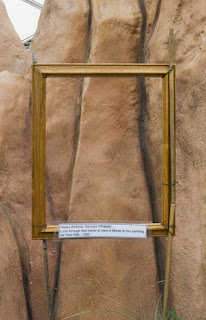That is a quote from an article in yesterday's New York Times that I assume to be considered deliberately provocative. The article, titled "Outside the Citadel, Art that Nurtures," is about art that is being called social practice. Its practitioners are artists whose work straddles the fence of aesthetics and activism. According to some prominent critics, it even falls over to the side of activism more often than not. Along the way the familiar question is raised--the one that usually is generated by purely aesthetic or conceptual avant-garde artists: Is it art?
I was delighted to read this and to hear the question raised in this context because it resonates so strongly with my own motivations as an artist and activist.
I spent 30+ years teaching art and I can explain Modernism and Conceptualism and everything in between. (I'm particularly fond of introducing DuChamp to newbies.) I'm grateful for the grounding and the vocabulary this has provided me. But I've long been uncomfortable with the continued perpetuation of some ideas that, frankly, in my opinion, have had their day, particularly the apparently endless desire for novelty--often of a self-indulgent bent.
I get Conceptual Art. (I actually consider my work conceptual, though not perhaps in the pure way that the capitalized term usually denotes. In fact I question whether art is art--as opposed to craft--if there is no conceptual component to it.) I also certainly understand and value the importance of aesthetics. But when I am making art, my motivation extends to, as it is put in the article, making "a difference in the world that is more than aesthetic."
My social practice and activism generally relates to environmental issues (although not exclusively.) If you are familiar with my work at all my use of the term "Urban Wilderness" comes as no surprise. I have long recognized that not everyone is comfortable with the marriage of these disciplines, something that is mentioned in the article. "Leading museums have largely ignored it," for example, referring to social practice art. In fact, as many of my readers know, I write two blogs, one about the arts (this one) and one about the environment (Urban Wilderness.)
The two blogs, in my perspective, are not separate disciplines but an acknowledgment of the usually distinct audiences that they attract. It is a dichotomy, like the term urban wilderness itself, that embodies the paradox of mutuality. I invite you to read the rationale for keeping two blogs that I have posted on my website: click here.
I also invite you to check out the rest of the story about social practice art: Outside the Citadel, Art that Nurtures
 |
| Commanding the View |





